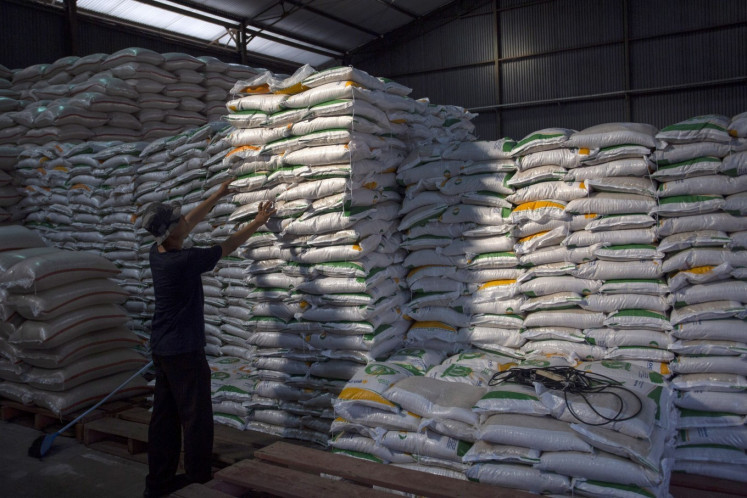Popular Reads
Top Results
Can't find what you're looking for?
View all search resultsPopular Reads
Top Results
Can't find what you're looking for?
View all search resultsSummit focuses on South China Sea, connectivity
Senior officials from ASEAN member countries were preparing the documents needed for the 21st ASEAN Summit and all related summits in the Cambodian capital on Friday with the South China Sea and connectivity topping the list
Change text size
Gift Premium Articles
to Anyone
S
enior officials from ASEAN member countries were preparing the documents needed for the 21st ASEAN Summit and all related summits in the Cambodian capital on Friday with the South China Sea and connectivity topping the list.
“Currently, we are in the housekeeping stages of preparing all documents needed for the summits, as well as procedural and protocol issues,” the Foreign Ministry’s director general for ASEAN cooperation, I Gusti Agung Wesaka Puja, told reporters on the sidelines of an ASEAN senior officials meeting.
“We are getting everything ready for the summits on Nov. 19 and 20 because there are a series of meetings [other than the ASEAN Summit], such as the ASEAN retreat, the East Asian Summit and meetings with dialogue partners.”
As for the substance, Puja said it would be discussed later as there were several outstanding points such as certain paragraphs on the South China Sea, connectivity issues and the East Asian Summit and senior officials were still identifying what the pending issues were.
On the South China Sea, he said that the forum had agreed to Indonesia’s six-point principles. “We should start from there,” Puja said.
“The South China Sea is still a delicate matter we have not discussed yet. I know this is one of the issues that is anticipated by everyone.
“This is an ASEAN meeting, however, and the South China Sea is just one of the highlighted issues.”
He maintained that the principle was to engage all parties in the creation of a stable and peaceful region.
“This is still a process of peaceful, diplomatic means. Of course there will be dynamics. We are also still in the process in deliberating the Code of Conduct [CoC]. We need to keep up momentum so that once all parties are ready, we can implement it. There is no time frame in discussing the CoC.”
Puja said the South China Sea issue should not distract attention from ASEAN’s big agenda of achieving the ASEAN Community in 2015.
“The media really love to have this issue highlighted but it is up to the wisdom of the leaders whether they will take up the issue in such a manner or put it in such a way that this meeting can contribute to the creation of stability and peace in the region.”
Attention is also being paid to efforts to expedite three aspects of connectivity in the context of the ASEAN Community 2015, he added.
“The first aspect is the physical aspect of the provision of infrastructure to accelerate the creation of an ASEAN Community while the second aspect is institutional connectivity, harmonizing ASEAN regulations with national ones,” he said.
“The third aspect is people-to-people contact allowing the movement of ASEAN residents within ASEAN to strengthen the ASEAN Community’s connectivity.”
Puja said an important point for Indonesia was to strengthen domestic connectivity considering the country’s vast archipelago.
“That is why we are supporting the maritime connectivity concept using the Ro-Ro [roll-on, roll-off] vessels connecting not only islands in Indonesia but also those of our neighboring countries,” he said.
The Trade Ministry’s director general for international trade cooperation, Iman Pambagyo, also highlighted the importance of improving domestic connectivity.
“It would be a waste if we built ASEAN-wide connectivity but still had problems at home,” he said on the sidelines of the Senior Economic Officials Meeting (SEOM).
“Such domestic connectivity is important for archipelagic countries such as Indonesia and the Philippines. We must make efforts to create domestic connectivity such as through the MP3EI,” he said.
Another important issue was to reduce the gap between ASEAN member countries, Puja said.
Iman said reducing such gaps was not only between the ASEAN 6 and the ASEAN 4 — known as the CLMV for Cambodia, Laos, Myanmar and Vietnam — but also inside countries.
“That is why last year Indonesia proposed the ASEAN Framework for Equitable Economic Development with a special focus on small and medium enterprises,” he said.










